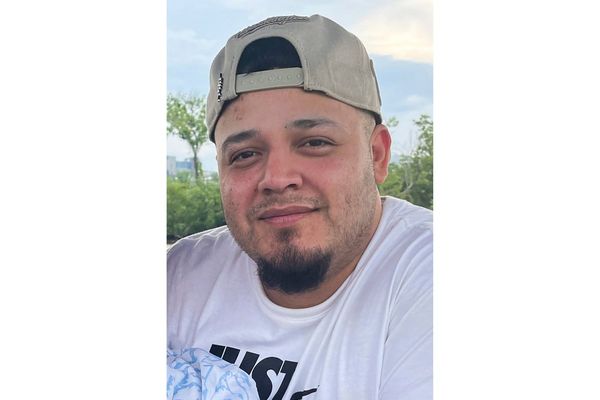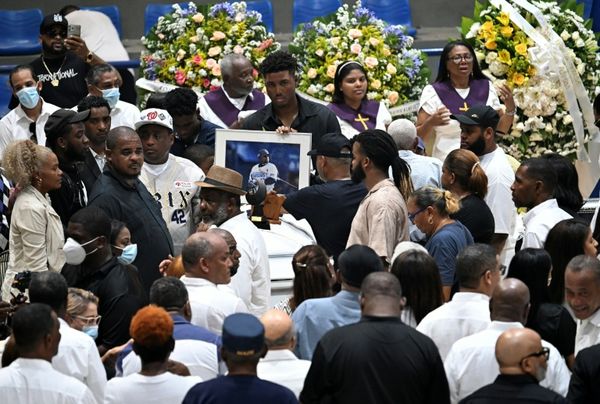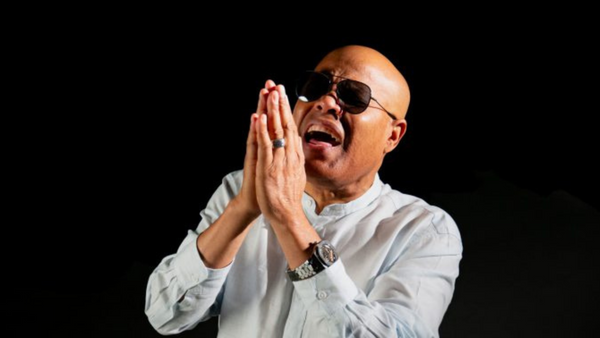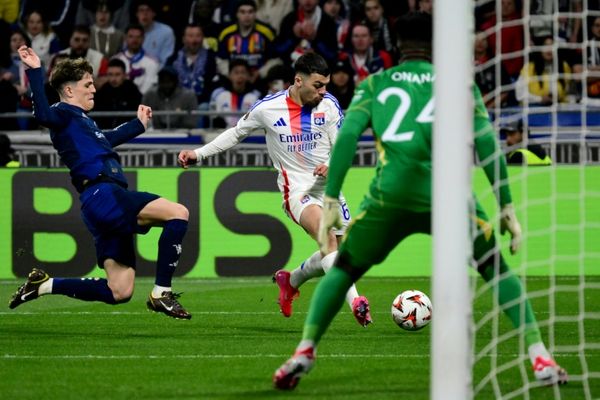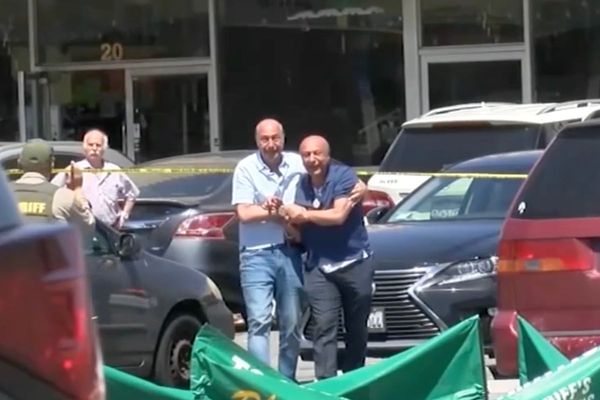This is the first of a two-part series examining racism in hockey through the shared experiences of current and former players, coaches, fans, and the media. This story will focus mostly on the on-ice experiences of players and coaches, while the second part will focus more on off-ice issues such as growing the game, hiring processes, and making the game more inclusive for all.
———
On Aug. 1, 2021, ahead of a playoff qualifying game between the Edmonton Oilers and the Chicago Blackhawks in the Edmonton bubble, Minnesota Wild defenseman Matt Dumba mustered up his courage and stepped to center ice.
Surrounded in a circle by players from both teams and with the spotlight on him, Dumba, wearing a Hockey Diversity Alliance hoodie, delivered a powerful speech condemning systemic racism and imploring society and hockey to do a better job of combating social injustice. Then, as the “Star-Spangled Banner” began to play, he dropped to a knee, becoming the first NHL player to kneel for the American anthem. Hockey’s racial reckoning had begun.
Dumba did this just months after George Floyd was murdered by a police offer in Minnesota, the same state that Dumba represents with the Wild. Dumba understood that demonstration would likely open him up to more racism than he’d already faced growing up as a Filipino Canadian hockey player, but he was driven by the knowledge that his words and actions would carry throughout the hockey world.
The moment reached Arcadia University women’s hockey coach Kelsey Koelzer in Pennsylvania. Koezler, who grew up as one of the only players of color in her Philadelphia suburb and later became the first Black female head coach in NCAA hockey, was struck by his courage.
“Obviously, he knew that was not going to be accepted — well, by most people, especially most involved in the world of ice hockey,” Koelzer said. “It didn’t impact his willingness and his willingness to, you know, stand up for what he believes.”
It also touched Fatou Bah, a board member of the Black Girl Hockey Club, an organization that strives to make hockey more inclusive for Black women. She immediately recognized the significance as well as the repercussions Dumba had accepted. However, she also noted that the historic moment came four years after Colin Kaepernick made a similar demonstration on the football field.
“So I almost look at it as hockey is four years behind in where players are feeling they can openly speak out about this,” Bah said.
Dumba’s decision to kneel was met with plenty of disapproval and hate on social media. One person even denied Dumba service as he tried to ship his car from Minnesota to Arizona, where he trains.
“There’s times where it’s really, really tough,” Dumba said. “There’s tough times when you’re getting questioned, and your integrity and your character feel like you’re being attacked. But at the end of the day, I know who I am, and so do my friends and family.”
Three years before Dumba knelt, his friend and former teammate J.T. Brown, then with the Tampa Bay Lightning, raised his fist during the anthem. Brown said he gives “all respect” to Dumba for his action, as well as for the speech he had the courage to make on national television. But he was just as shocked and impressed by the number of players who “don’t look like Matt or I” who spoke out, whether on social media or in locker rooms, following Floyd’s death.
“To see the sheer, mass numbers was kind of shocking, I guess, because we just had never seen it in that volume before,” Brown said. “But that number was a positive sign.”
The positive responses from many fans and players, as well as the change Dumba sees happening, has been rewarding for him. These changes include the NHL’s celebrating Black History Month since 2019, and the creation of the Black History Hockey Tour that made its way around the country this year, including a stop in Philadelphia. Both the HDA and the NHL inclusion committees were also started in 2020.
But the reality is there’s still a long way to go — Koezler believes hockey is probably “a good five-seven years behind some of the other sports.” Too often, these conversations stop when Black History Month ends. But as recent events have shown, the difficulties players of color face in hockey extend far beyond the month of February.
A long way to go
On Jan. 19, an ugly incident in the ECHL renewed the message that hockey has a long way to go when it comes to stamping out racism. During a game between the Jacksonville Icemen and the South Carolina Stingrays, Jacksonville defenseman Jacob Panetta taunted the Stingrays’ Jordan Subban, with what Subban described as a “monkey gesture.” Panetta later apologized and claimed the gesture was not racially motivated. Panetta was subsequently released by the Iceman and suspended for the rest of the season for what the league called a “racial gesture.”
Whether it was meant to be racial or not, Bah said that as someone with an understanding of Black history, it was easy to recognize it was unacceptable.
The Flyers’ NHLPA rep, Travis Sanheim, said hearing about that incident upset the Flyers players and made them take a step back and realize how much more work has to be done. Dumba said it sparked conversations in the Wild locker room as well.
Subban’s experience wasn’t the only recent example of a player being subjected to racism in hockey. In fact, it wasn’t even the only one that week, as Krystof Hrabik, a forward with the San Jose Barracuda of the AHL, was suspended 30 days for making a racial gesture at the Tucson Roadrunners’ Boko Imama on Jan. 12. Imama had previously had a racial slur directed at him in 2020 by former Flyer Brandon Manning, then with the Bakersfield Condors. Manning was suspended for only five games.
When Brown heard about what happened to Imama, his instant reaction was “Didn’t something just like this happen to him recently?” Then the Subban incident happened.
“It puts a stain on the game I love so much, and I see what’s in these videos, and I see it in a different light,” Brown said. “It’s weird to see it because obviously you have the sadness, maybe the anger about this happening again, feeling upset for the person that happened to. … I just I feel it’s just a weird bunch of emotions. And I think that that’s a bad thing. But it’s also a good thing that those emotions are still there, because it’s going to make you want to do something right.”
As upsetting as the incidents were, they weren’t surprising to Brown, who has been subject to racist comments and slurs from the time he was about 8 until retiring last summer.
He clearly remembers getting called the N-word on one occasion in youth hockey and going to his coach about it. His coach took it to a referee, who said he didn’t hear it, so he couldn’t make a call. Brown’s coach’s response was to pull the entire team off the ice, saying they wouldn’t play if the offender wasn’t punished. Brown said he was lucky to have received that support from his coach, but he knows not every player does.
Like Brown, University of Maryland, Baltimore County coach Derek Arledge remembers everything about the first time he was called the N-word. He never expected it to be directed at him until he was called it during a hockey game. It’s been years, but he knows the play that led up to it, the team he was playing, and the player’s name. He also remembers how it was resolved — it wasn’t. Once again, a ref replied, “I didn’t hear it.”
Dumba’s parents never realized that by signing up their young son for hockey, they’d potentially be placing him in a hostile environment. But children can be ignorant and mean-spirited, as can their parents. Bolstered by his love of the game, Dumba chose to continue with hockey in spite of the prejudice he often faced at the rink.
A member of the Hockey Diversity Alliance, Dumba was part of its “#TapeOutHate” campaign earlier this year. Brought together by Budweiser for an on-camera commercial, he and other members of the HDA shared their experiences with racism in hockey.
At one point, he asked if the other players would put their children in hockey after what they experienced themselves. Toronto Maple Leaf and former Flyer Wayne Simmonds answered candidly, saying that if his daughter had to go through what he did, he wouldn’t have her play hockey.
The tweets the players had received that they shared in the commercial were probably more uncensored than what people had seen before, Brown said. Dumba said his teammates’ responses were encouraging.
“It’s eye-opening for a lot of them,” Dumba said. “They definitely all understand it. And a lot of them have kids themselves and would never want to see their kids in that situation.”
The game has grown a lot since Arledge and Dumba were young. There are more players of color at every level as well as more resources, and leagues are taking stronger stances against racism.
Players of color are still rare proportionally, and there’s still a prevailing view around minority communities that hockey is a “white man’s sport.” Gillian Jackson, a coach for Snider Youth Hockey, and Koezler, get shocked looks “all the time,” as Black female hockey players. Jackson has seen the looks she gets when she shows up to rinks, “like I’m going to steal the boards just because I’m stretching outside.”
The NHL has started to talk more about racism, especially since Kim Davis became the league’s senior executive vice president in 2017. But even with the new “Hockey Is for Everyone” slogan, there are still people — white and not, players and fans — who see it as a sport for white men.
Calling all allies
But it’s not just up to the Black players and coaches to carry the burden and initiate change, said former Flyer, Donald Brashear, who is Black and played more than 1,000 NHL games between 1994 and 2010. It’s on everyone, and in a sport where most of the fans are white, white players speaking out can have a huge impact.
“Psychologically, you’re going to accept and listen to and agree with statements of whoever’s in your in group,” said Koezler, who graduated with a degree in psychology from Princeton. “That’s something that we need, white allies to speak up and to understand our journey and understand our experiences and why we’re doing what we’re doing and try to share that message as well.”
Sanheim, who is from Manitoba, grew up without exposure to much diversity on the ice, so when he heard some of what players of color go through, he was shocked and horrified. Through the conversations that have been happening at the NHL level in recent years and more interactions with players of color like former teammate Simmonds, Sanheim’s perspective has grown.
As hockey players, “their ultimate dream was obviously to play in the NHL, and the fact that they had to go overcome barriers that a lot of us never even experienced, it’s just incredible,” Sanheim said.
As a kid with NHL dreams, Sanheim remembers how he would mimic what the pros did. Now he understands how such emulation makes his own actions and his teammates’ actions important when it comes to battling racism. However, Sanheim knows many in hockey have more listening and learning to do.
While white hockey players around the league can afford to move away from the topic of racism when it’s not Black History Month or following an important event, Dumba and other players around the league live those conversations every day and can’t sit back.
“There’s still more stuff that we can do to promote diversity in this game,” Dumba said. “I think a little action can go a long way and still kind of waiting for that from the NHL.”

